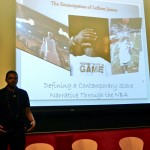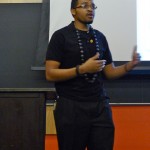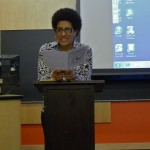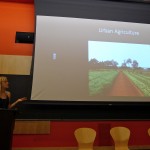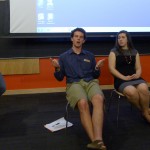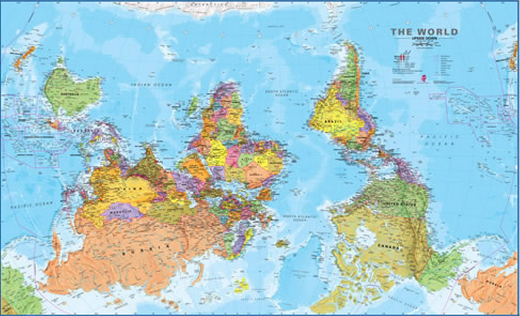 Inequality in Brazil: An Exploration of Race, Class, Gender, and Geography
Inequality in Brazil: An Exploration of Race, Class, Gender, and Geography
Information Session Thursday November 20th at 4:30p.m. in Denny 112
Sociology 236 / LALC 300 / PORT 380
Professors: Anthony Justin Barnum and Edvan Brito
Email: barnuma@dickinson.edu, britoe@dickinson.edu
This course takes a critical look at the layers of Brazilian society that shape, construct, and inhibit life outcomes in terms of in/equality. Students will be asked to examine how the most fundamental elements of social stratification (race, class, gender, and geography) function both separately and in tandem to organize systems of inequality in the Brazilian social, political, and economic contexts. The course uses theoretical and practical applications of stratification to evaluate how social constructions of difference influence social institutions and social policy and the effects they have in individual lived experiences. Additionally, class discussions will also consider how the forces of racism, sexism, and classism impact the attainment of basic needs, such as wages, health care and housing.
Students will have the opportunity to visit a favela where they will meet with representatives from NGOs working in the areas of race, class, and gender and have the opportunity to interview people at the grass roots level. They will visit culturally important sites linking migrant communities across Brazil as well as have the opportunity to witness Candomblé ceremonies of the Afro-Brazilian religion and participate in capoeira, the Afro-Brazilian martial art. Students will also have the chance to visit UNESCO world heritage cites such as Pelorinho, the old slave market and the Catholic church reserved for slaves. Students will meet with faculty from several Brazilian universities that will discuss issues such as affirmative action, the homicide of Black women, the Black Social Movements, and Homeless Workers. Students will sample traditional foods, hear and dance samba.
Due to Brazil’s unique history, three major cities, São Paulo, Rio de Janeiro, and Salvador will be visited both for their historical and contemporary importance. These three cities represent the highest racial diversity of Brazil. Sao Paulo has the largest population, but the smallest percentage of Afro Brazilians, about 35% of the city. Rio is about 48% Afro Brazilian while Salvador is about 70% Afro Brazilian. Students will visit culturally important sites linking migrant communities across Brazil as well as will meet with faculty from several Brazilian universities that will discuss issues such as affirmative action, the homicide of Black women, the Black Social Movements, and Homeless Workers. Students will sample traditional foods, hear and dance samba.
Salvador
Salvador is the first capital of Brazil. When Salvador was capital the Brazilian economy was based on sugarcane and slaves. Today, the wealth of this time can be seen in the many Catholic Churches full of gold decorations, which can be contrasted to the Catholic Churches reserved for the slaves which are without gold. It is also the home of Candomblé, the Afro-Brazilian religion. Site visits will include a visit to a center of Candomblé, Pelorinho (the old slave market and a UNESCO World Heritage Site), the Catholic church reserved historically for slaves which today holds mass with Afro-Brazilian music, a visit to a school of capoeira, (Afro-Brazilian martial art), Steve Biko Institute (an education center for Afro-Brazilians), the Center for African and Asian Studies of the Federal University of Bahia. An overnight trip to Cachoeira (a colonial city, center of Candomblé, and of importance to Bahian independence) is also planned. Salvador is the location of the American anthropologist, Ruth Landes research on the Afro Brazilian religion and race The City of Women (1947). E. Franklin Frazier, a prominent sociologist and professor at Howard University also conducted ethnographic research here for his book, The Negro Family in Bahia, Brazil (1942).
Rio de Janeiro
In 1763, the capital moved to Rio, which became the second capital of Brazil. It is a city built on a European model and as such built to exclude the indigenous and the African elements of the Brazilian culture. It served as the home of the Portuguese royal family from 1808 to 1821 to escape Napoleon’s invasion. During these 13 years Rio de Janeiro was the capital not only of Brazil but of the Portuguese Empire, the only European capital to be outside of Europe. Rio is the second most popular destination for migrants in Brazil. It is also the traditional birthplace of favelas following the freeing of the slaves. Today it is home to over 1,000 of these communities.
Rio is also known for its Carnival, the largest in the world. However, at the production site you will find many Afro-Brazilians working on the construction of the many floats and costumes, but few of whom will participate. Rio is also home to the Museum of Native Brazilians, and the Museum of National History. In addition students will visit Crioula, an NGO focusing on race, gender, and class, St. Cristopher’s market which is a cultural market catering to Northeastern Brazilian immigrants, and a lecture from a professor of the Universidade Estadual de Rio de Janeiro who will discuss affirmative action in Brazil.
São Paulo
São Paulo is the largest city in Latin America. It is the industrial center of the country and as such is a destination for migrants from all parts of Brazil. It is often referred to as the New York of Latin America.
São Paulo is home to the largest Japanese community outside of Japan and also has a large Italian community, a large Afro Brazilian community, as well as Brazilians of other European national origins. São Paulo is the home of the Museum of Afro-Brazilian culture, the Portuguese Language Museum, and São Paulo State Immigration Museum. São Paulo today is the economic center of Brazil and the home to the Brazilian stock exchange (BOVESPA) on one end of the spectrum and favelas on the other. Students will have the opportunity to visit both BOVESPA and a favela where they will meet with representatives from NGOs working in the areas of race, class, and gender and have the opportunity to interview people at the grass roots level.
In addition, students will visit the Center for Northeastern traditions that documents the migration of Northeastern Brazilians to the south. Students will also meet with Jackie Silva who conducts research on Black women’s homicides, Flavia Rios a sociologist who studies Black Social Movements, a representative from Educafro (an NGO focusing on race and class), a representative of Geledés (an NGO focusing on race and gender), and a representative of the movement of Homeless Workers (Trabalhadores Sem-Teto).







